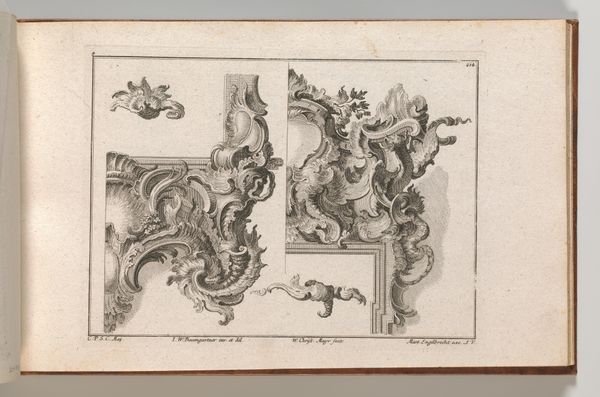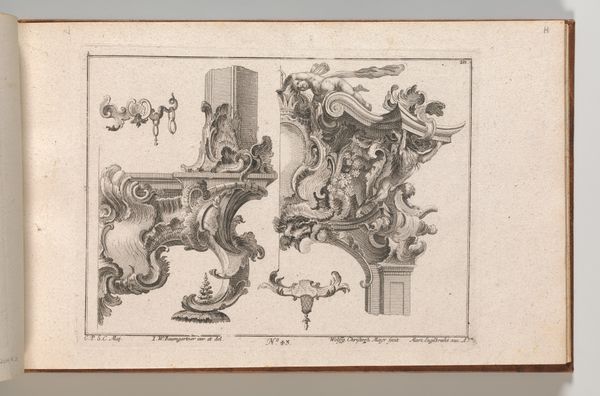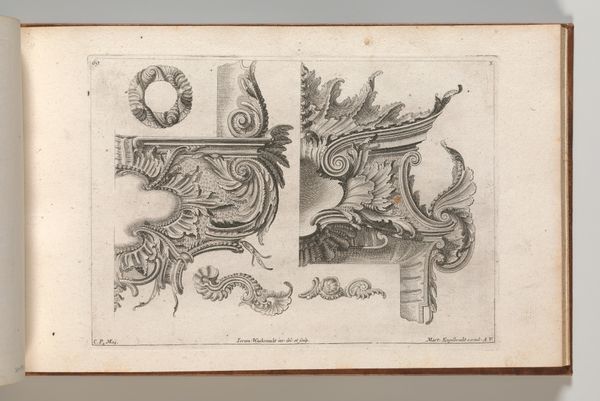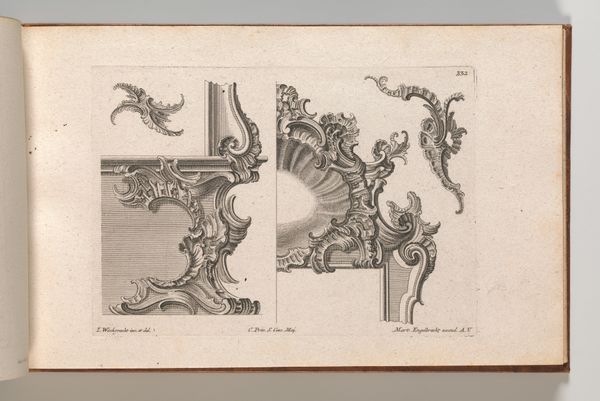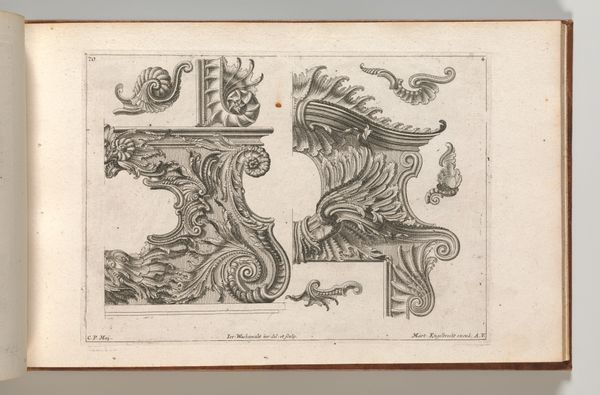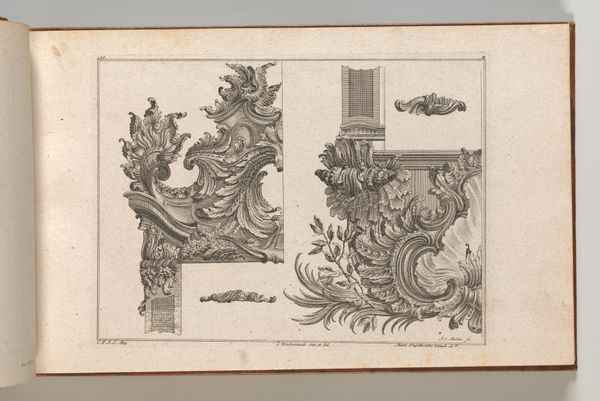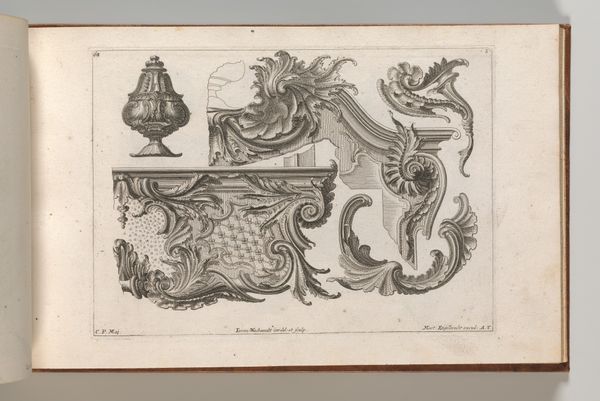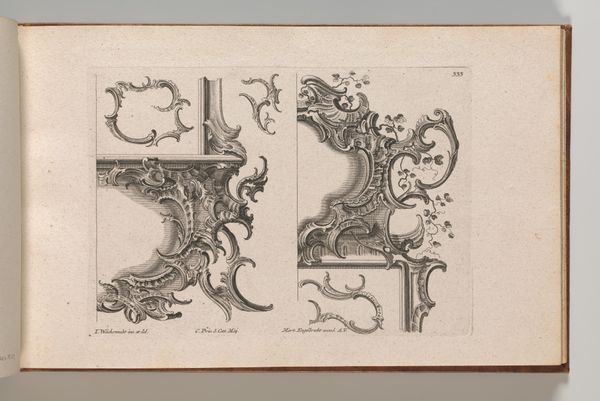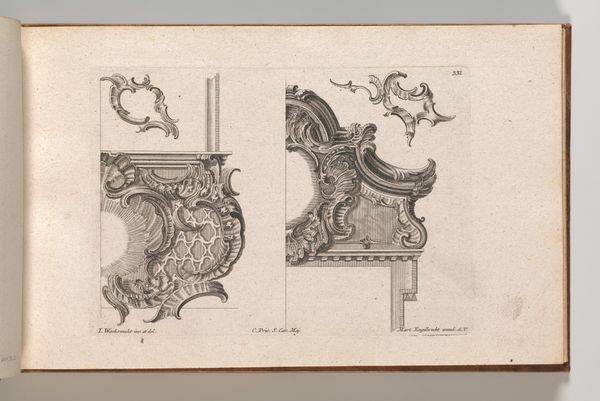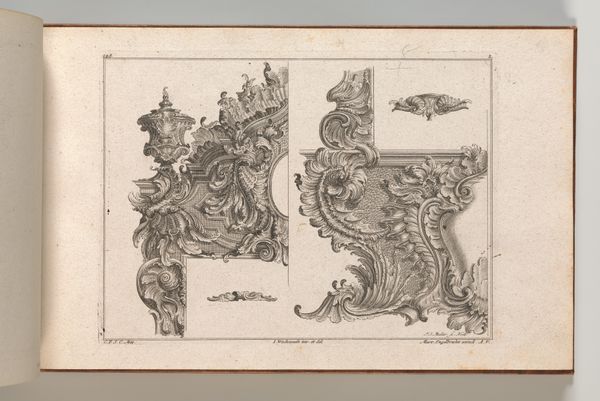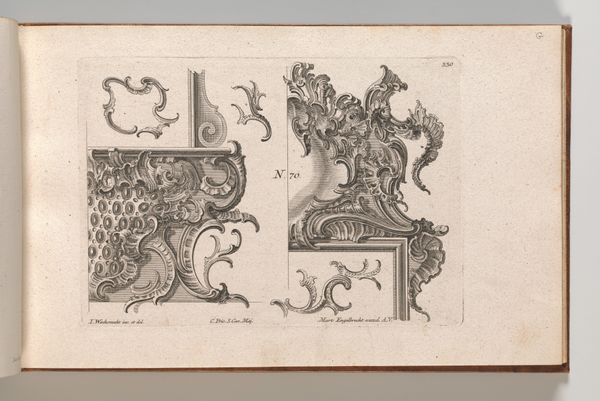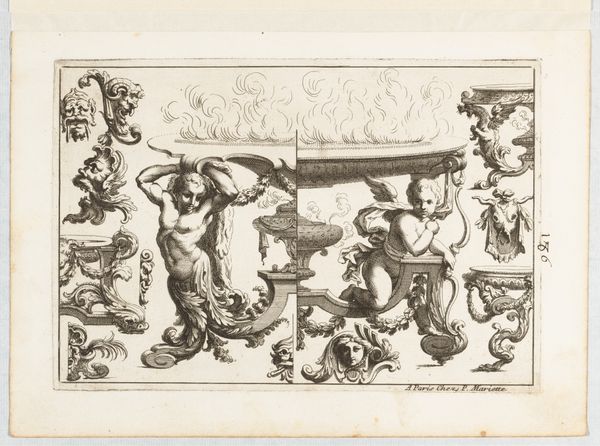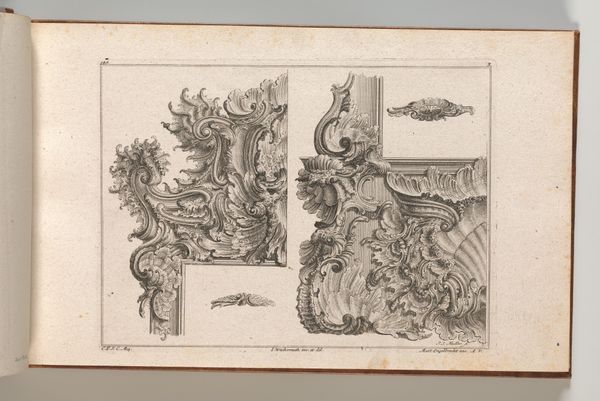
Suggestion for the Decoration of Lower Right and Top Right of an Altar Frame, Plate 3 from an Untitled Series with Rocailles Ornaments for Altar and Door Frames 1745 - 1755
0:00
0:00
drawing, ornament, print, engraving, architecture
#
drawing
#
ornament
#
baroque
# print
#
line
#
decorative-art
#
engraving
#
architecture
#
rococo
Dimensions: Overall: 8 7/16 × 13 3/4 in. (21.5 × 35 cm)
Copyright: Public Domain
Editor: This print by Wolffgang Christoph Mayr, dating back to the mid-18th century, is titled "Suggestion for the Decoration of Lower Right and Top Right of an Altar Frame." It showcases intricate rocailles ornaments. What immediately grabs me is the sheer detail in the lines, the contrast. How do you approach a work like this? Curator: I look first at the formal relationships—the interplay of line and form. Observe how the engraver uses hatching and cross-hatching to create depth and volume, a kind of illusion on a flat plane. Notice, too, the dynamism of the rocaille. The curves oppose to generate balance, but each section exhibits movement that appears almost independent. Editor: So you see it primarily as a study in line and form, rather than as a historical artifact? Curator: While the historical context certainly provides information and enriches the experience, my analysis begins with the artwork’s visual components. How does Mayr use the tools of his trade to create a cohesive, interesting whole? Do the ornamental sections, for example, convey spatial balance and material stability? Editor: They do seem self-contained, existing only to explore line quality rather than to reflect an understanding of structure. I can also see where some of those swirling elements appear repetitive. Curator: Precisely. By emphasizing the relationships between the individual compositional units and considering the application of those components on real structure, it is easy to interpret both balance and discord in the artwork. What do you think are the most critical formal relations Mayr balances? Editor: Definitely the overall balance, even if the rocailles feel a little overwrought at times. I also appreciate seeing art broken down this way - analyzing form rather than context initially. It opens up new avenues for discussion, doesn’t it? Curator: Indeed, understanding formal analysis equips one to recognize and value all forms of cultural expression, not only those sanctioned by conventional history. I’m glad to have shared this method of seeing with you today.
Comments
No comments
Be the first to comment and join the conversation on the ultimate creative platform.
